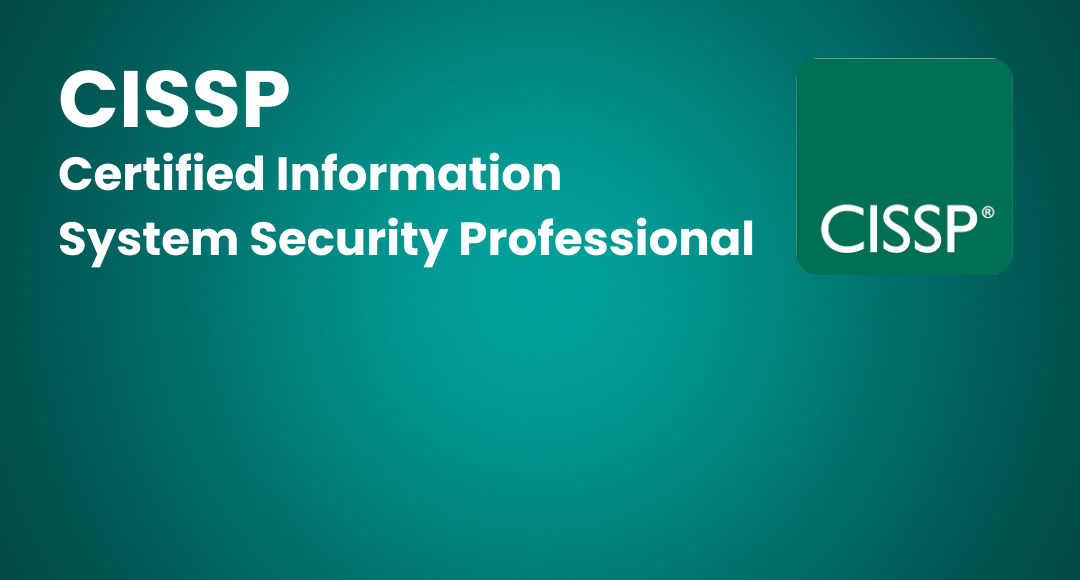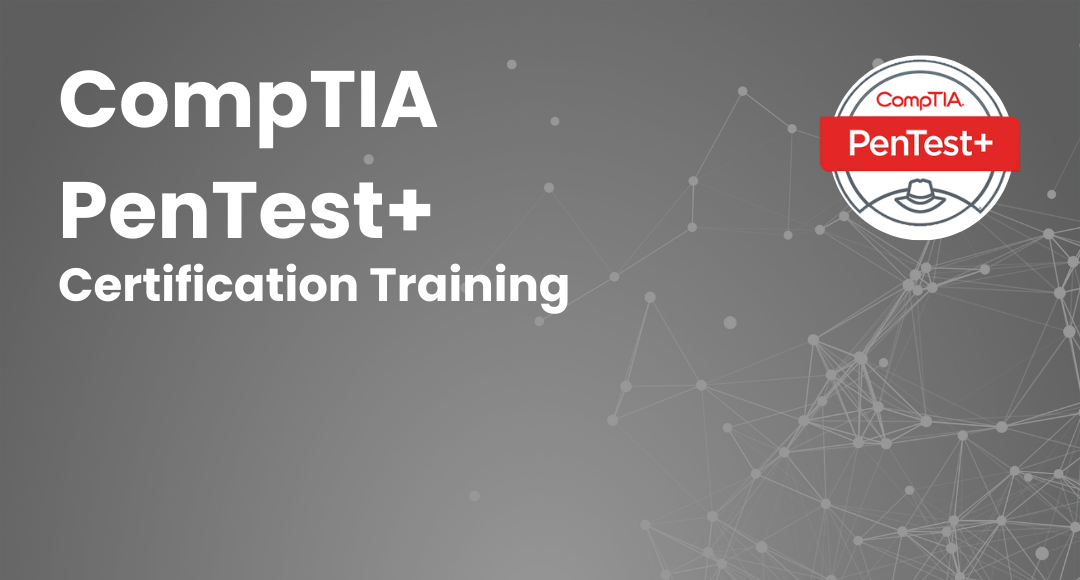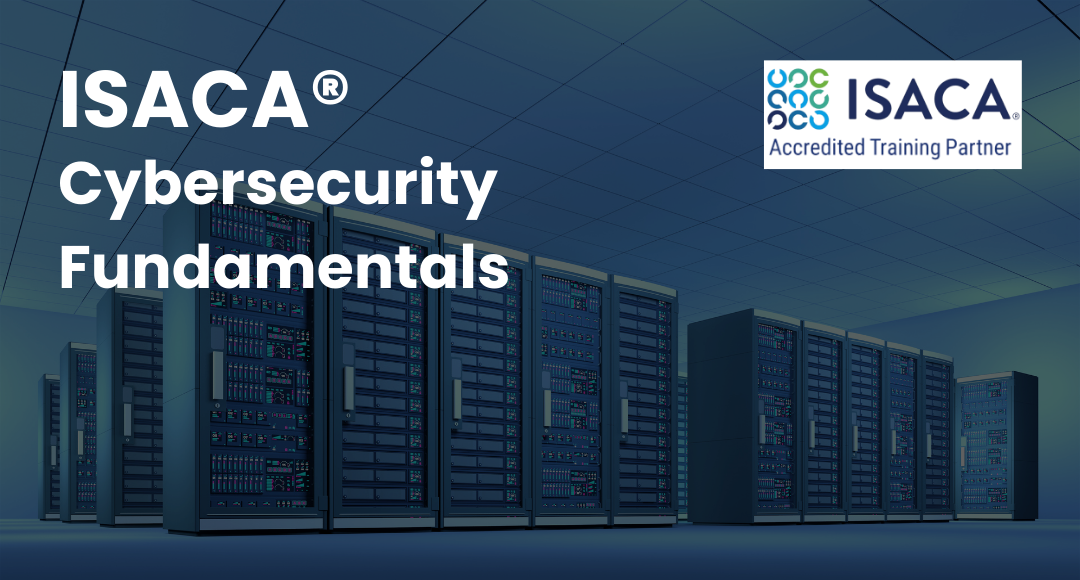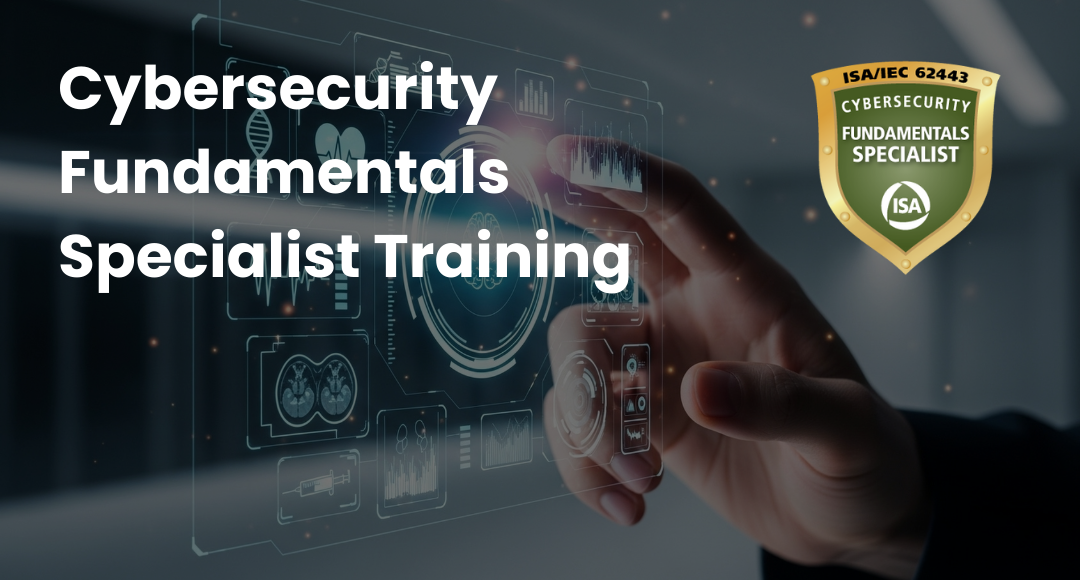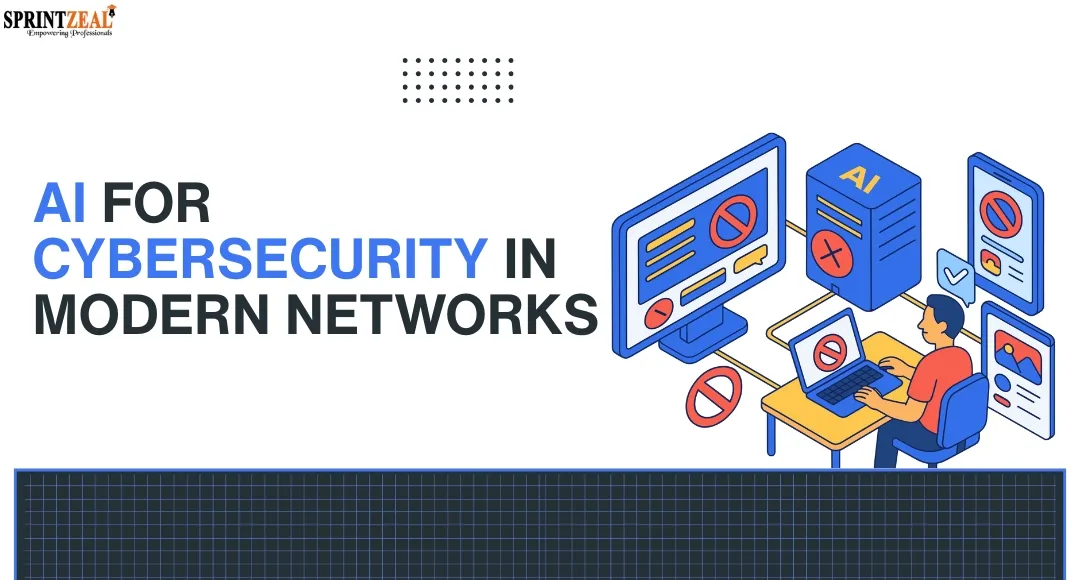Fundamentals of Risk-Based Auditing: A Strategic Framework
-
 By Sushmith
By Sushmith - Published on Dec 5 2023

Table of Contents
- What is a Risk-Based Internal Audit?
- Core Fundamentals of Internal Auditing: Principles and Concepts
- Identifying Business Risks in Internal Auditing
- Fundamental role of Risk Assessment in Internal Auditing
- Strategic Approaches to Navigate Unexpected Challenges
- Safeguard your career with Sprintzeal
- FAQs
- Summary
What is a Risk-Based Internal Audit?
Organizations are increasingly reliant on technology; making cybersecurity controls a critical component of their operations. These controls help protect sensitive data, maintain system integrity, and ensure business continuity against cyber threats. However, managing cybersecurity risks effectively requires a proactive approach, and risk-based internal audit (RBIA) plays a pivotal role in achieving this goal.
Now, what is a Risk-Based Internal Audit? RBIA is a systematic methodology that focuses on identifying, assessing, and prioritizing risks within an organization. In the context of cybersecurity, RBIA involves evaluating the effectiveness of cybersecurity controls in mitigating potential threats. This comprehensive assessment helps organizations understand their cybersecurity posture and take proactive measures to address vulnerabilities before they are exploited.
Unlike traditional compliance-based audits, which primarily focus on adherence to regulations and policies, RBIA takes a more proactive approach by prioritizing audit efforts based on the likelihood and potential impact of risks. This targeted approach ensures that internal auditors allocate their time and resources effectively to address the areas of greatest concern to the organization.
Core Fundamentals of Internal Auditing: Principles and Concepts
Internal auditing plays a crucial role in ensuring the integrity and effectiveness of an organization's operations. It provides an independent and objective assessment of an organization's internal controls, governance processes, and risk management practices. At the core of internal auditing lies a set of fundamental principles that guide the profession and ensure its credibility and effectiveness.

Principles of Internal Auditing
What are the fundamentals of risk-based auditing? The International Standards for the Professional Practice of Internal Auditing (IPPF) outline five fundamental principles that underpin the internal audit profession:
Integrity:
Internal auditors are held to the highest ethical standards of integrity. They must be honest, trustworthy, and accountable for their actions. They must adhere to the code of ethics of their professional organization and avoid any activities that could bring their reputation or the profession into disrepute.
Objectivity:
Internal auditors must maintain independence and objectivity to ensure that their work is unbiased and free from undue influence. This means that internal auditors should not have any conflicts of interest that could impair their judgment or objectivity. They should also be free from pressures from management or other stakeholders that could compromise their ability to provide an independent assessment.
Competence and Due Professional Care:
Internal auditors must possess the necessary knowledge, skills, and experience to perform their duties effectively. They must stay up-to-date with the latest auditing standards, techniques, and industry best practices. They must also exercise due professional care in planning, conducting, and reporting on their audits.
Confidentiality:
Internal auditors must maintain the confidentiality of information obtained during their audits. This means that they should not disclose confidential information to unauthorized individuals or use it for personal gain. They should also take appropriate measures to protect sensitive information from unauthorized access or disclosure.
Communication:
Internal auditors must effectively communicate their findings and recommendations to management and other stakeholders. This communication should be clear, concise, and timely. Internal auditors should also be prepared to explain their findings and recommendations to management and address any questions or concerns.
Concepts of Internal Auditing
To navigate the complex landscape of auditing, a profound understanding of fundamental concepts is paramount, acting as the guiding tenets essential for achieving audit excellence:
Materiality:
Identifying and assessing information significant enough to influence decision-making processes is pivotal. Materiality guides auditors in focusing their efforts on critical areas, ensuring that resources are allocated where they matter most.
Risk:
Systematically evaluating potential challenges and uncertainties embedded within the business environment provides a comprehensive risk profile. Auditors analyze risks to identify potential threats and opportunities, contributing to strategic decision-making.
Evidence:
The substantiation of audit findings through the rigorous collection and analysis of concrete proof is the essence of audit credibility. Evidential support strengthens the reliability of audit outcomes, providing a robust basis for conclusions.
Enhance Decision-Making:
Provide insights on material information for informed and strategic decision-making by organizational leadership. The application of materiality ensures that decision-makers focus on pertinent information.
Mitigate Risks:
Systematically identify and address potential risks within the organization, contributing to risk mitigation strategies. The risk concept aids auditors in identifying threats and recommending effective risk management measures.
Strengthen Findings:
Support audit conclusions with credible evidence, fortifying the reliability of audit outcomes. The use of evidence ensures that audit findings are not only sound in theory but substantiated by concrete proof.
Identifying Business Risks in Internal Auditing
The ability to identify and assess risks is at the heart of effective internal auditing. Let’s now explore practical strategies and methodologies for identifying business risks within the realm of internal auditing, ensuring a proactive and comprehensive approach to risk management.
The Importance of Proactive Risk Identification
Proactive risk identification involves staying ahead of the curve by systematically analyzing potential pitfalls before they can impact the organization adversely. This approach aligns seamlessly with the overarching principles of risk-based internal audit, where anticipation is the key.
Methodologies for Risk Identification

SWOT Analysis:
Strengths, Weaknesses, Opportunities, Threats (SWOT) analysis is a versatile tool for internal auditors. By evaluating internal strengths and weaknesses alongside external opportunities and threats, auditors can pinpoint potential risks and opportunities.
Scenario Analysis:
Considering various scenarios helps auditors envision different potential futures and assess the associated risks. This method enables organizations to develop strategies to mitigate these risks proactively.
Historical Analysis:
Examining past audit findings and Cybersecurity incidents provides valuable insights into recurring risks. Learning from historical data empowers auditors to identify patterns and address vulnerabilities that may have been overlooked.
Brainstorming Sessions:
Harnessing the collective intelligence of team members through brainstorming sessions can uncover a myriad of potential risks. Encourage open dialogue and diverse perspectives to identify risks that might not be apparent through individual assessments.
Benchmarking:
Comparing the organization's practices with industry benchmarks allows internal auditors to identify deviations that could pose risks. By staying abreast of industry standards, auditors can proactively address gaps and align practices with best-in-class benchmarks.
Technology-Assisted Risk Identification:
Leverage technological tools and data analytics to identify risks efficiently. Advanced software can analyze vast datasets to detect anomalies, patterns, and emerging risks, providing auditors with valuable insights.
Integration of Risk-Based Audit Approach
To ensure a cohesive risk management Cybersecurity strategy, it's crucial to integrate a risk-based audit approach into the identification process. The "risk-based audit approach" emphasizes aligning audit procedures with the assessed risks, ensuring that resources are allocated efficiently based on the level of risk associated with different areas of the organization.
Building a Risk Register
A risk register is a fundamental tool for internal auditors seeking to identify, assess, and manage risks effectively. This document serves as a central repository for all identified risks, providing a structured framework for ongoing monitoring and mitigation efforts.
Continuous Monitoring and Adjustment
Risk identification is not a one-time process; it requires continuous monitoring and adjustment. Internal auditors should regularly revisit and update the risk register to reflect changes in the business environment, industry trends, and internal operations.
Fundamental role of Risk Assessment in Internal Auditing
Currently, organizations are facing a multitude of risks that can potentially hinder their growth and success. To effectively navigate these challenges and safeguard their operations, organizations are increasingly adopting a risk-based approach to internal auditing. At the heart of this approach lies risk assessment, a systematic process of identifying, analyzing, and prioritizing risks that can impact the organization's objectives.

Setting the Stage: The Crucial Starting Point
Before delving into the complexities of risk-based internal auditing, it's imperative to recognize the foundational role of risk assessment. At its essence, risk assessment acts as the compass guiding auditors through the labyrinth of potential threats and vulnerabilities within an organization.
Proactive Identification: Navigating Risks Before They Surface
The primary responsibility of risk assessment lies in the proactive identification of potential hazards. Auditors can analyze and pinpoint areas of vulnerability for timely intervention and risk mitigation. This proactive stance is pivotal in preventing issues from escalating into full-blown crises.
Tailoring Audit Approaches: Precision in Strategy
Armed with insights gained from risk assessment, internal auditors can tailor their approaches with surgical precision. This customization ensures that audit efforts are focused on areas of heightened risk, optimizing resource allocation, and enhancing the efficiency of the entire audit process.
Aligning with Objectives: A Strategic Partnership
Risk assessment serves as the linchpin connecting internal audit activities with the broader strategic objectives of the organization. By understanding the risks that can impede goal attainment, auditors contribute directly to the strategic decision-making process, becoming strategic partners.
The Backbone of Decision-Making: Informed and Strategic
Through rigorous risk assessment, internal auditors provide the necessary information for stakeholders to make decisions grounded in a thorough understanding of potential consequences. This ensures that organizational actions are not only well-informed but strategically sound.
Early Warning System: Anticipating Challenges
Think of risk assessment as an early warning system for an organization. By identifying risks before they materialize, auditors provide a crucial buffer that allows the organization to anticipate challenges and implement proactive measures. This foresight is vital in maintaining flexibility.
Strategic navigation involves anticipating potential challenges, developing contingency plans, and fostering an organizational culture that embraces adaptability and innovation. It requires a proactive stance, enabling organizations to identify and address emerging risks before they escalate into full-blown crises.
Technology Integration for Effective Risk Management:
Strategy: View technology as an ally, not a threat. Leverage it to enhance risk-based audit approaches and overall risk-based internal audits.
Implementation: Integrate advanced technologies like artificial intelligence and data analytics into risk assessment and monitoring, enhancing the accuracy of risk-based auditing. Stay abreast of technological advancements to continually enhance risk management capabilities.
A strategic internal auditor harnesses the power of technology to navigate the complexities of the digital landscape, turning potential risks into opportunities, reflecting the essence of a risk-based approach in auditing.
Scenario Planning and Contingency Development:
Strategy: Prepare for the unknown by envisioning various scenarios and crafting robust contingency plans—a fundamental aspect of fundamentals of auditing.
Implementation: Conduct scenario planning sessions involving key stakeholders. Develop detailed contingency plans based on these scenarios, ensuring that the organization is equipped to respond effectively to unexpected events.
Scenario planning transforms internal auditors into architects of resilience, enabling them to navigate through uncertainties with a well-defined roadmap.
Fostering a Culture of Risk Awareness:
Strategy: Make risk management a shared responsibility by instilling a culture of risk awareness—an integral part of the fundamentals of internal auditing.
Implementation: Conduct regular training sessions to educate employees on potential risks. Establish open communication channels for reporting concerns. Encourage a mindset where risk is considered in decision-making processes at all levels of the organization.
A culture of risk awareness transforms every employee into a vigilant guardian, collectively contributing to the organization's risk-based internal audit resilience.
Continuous Improvement and Adaptability:
Strategy: Embrace a mindset of continual improvement to stay ahead of evolving challenges, aligning with the fundamentals of auditing.
Implementation: Regularly review and update risk-based audit approaches and risk management processes. Stay informed about industry best practices and emerging trends. Cultivate a learning environment within the internal audit team, promoting adaptability to changing circumstances.
Continuous improvement ensures that the internal audit function remains agile and ready to navigate the ever-shifting landscape of risks, a true testament to a robust risk-based internal audit.
Safeguard your career with Sprintzeal
This competitive business domain sets a vital demand for internal auditors to stay ahead of the curve and equip themselves with the latest tools and techniques and safeguard your career. Sprintzeal, a leading provider of professional courses and training, offers a comprehensive suite of IT Security courses to empower internal auditors and elevate their professional development.
Enhance Your Skills with Sprintzeal's Expert-Led Training
Sprintzeal's training programs are meticulously crafted by industry veterans and renowned subject matter experts, providing you with in-depth knowledge of the latest internal auditing practices, methodologies, and standards. Our training encompasses a wide range of topics, including:
Risk-based auditing
Data analytics for internal auditors
Fraud prevention and detection
Compliance auditing
Governance and internal audit
Internal audit reporting and communication
Elevate Your Expertise with Sprintzeal's Specialized Certifications
Pursue industry-recognized certifications to demonstrate your commitment to professional development and enhance your career prospects.
Sprintzeal offers professional certification courses, such as:
Enroll today and take your internal audit career to the next level!
Visit Sprintzeal.com to learn more about our course offerings.
FAQs
What is meant by risk-based auditing?
Risk-based auditing is a process of prioritizing audit activities based on the potential impact and likelihood of risks. This approach helps to ensure that audit resources are focused on the areas of highest risk.
What are the five types of risk audit approach?
There are five main types of risk audit approach:

Top-down approach: This approach starts with an assessment of the organization's overall risk profile and then identifies individual risks.
Bottom-up approach: This approach starts by identifying individual risks at the process or activity level and then aggregates them to assess the organization's overall risk profile.
Hybrid approach: This approach combines elements of the top-down and bottom-up approaches.
Threat-based approach: This approach focuses on identifying and assessing threats to the organization.
Vulnerability-based approach: This approach focuses on identifying and assessing vulnerabilities in the organization's controls.
What are the key components of a risk-based IT audit?
The key components of a risk-based IT audit include:
- Risk identification: Identifying the IT risks that the organization faces
- Risk assessment: Assessing the likelihood and impact of each IT risk
- Audit planning: Developing an audit plan that focuses on the highest-risk IT areas
- Audit execution: Executing the audit plan and collecting evidence
- Audit reporting: Reporting audit findings and recommendations to management
Steps in risk-based audit approach
The steps in a risk-based audit approach are as follows:
- Establish the audit universe: Identify all of the processes, activities, and assets that will be included in the audit.
- Identify potential risks: Brainstorm and identify potential risks that could impact the organization's objectives.
- Assess risks: Analyze each risk to determine its likelihood and impact.
- Prioritize risks: Rank risks based on their likelihood and impact.
- Develop audit plan: Develop an audit plan that focuses on the highest-priority risks.
- Execute audit plan: Conduct audits of the highest-priority risks.
- Report findings: Report audit findings and recommendations to management.
Risk-based internal audit plan example
A risk-based internal audit plan should include the following elements:
- Audit objectives: The specific goals of the audit.
- Scope of the audit: The processes, activities, and assets that will be audited.
- Audit methodology: The approach that will be used to conduct the audit.
- Audit schedule: The timeframe for completing the audit.
- Audit resources: The personnel and resources that will be allocated to the audit.
- Audit budget: The estimated cost of the audit.
Summary
Unexpected challenges are an inevitable reality. These challenges can pose significant threats to an organization's growth, stability, and reputation. However, by adopting a strategic approach to navigating unexpected challenges, organizations can not only weather the storms but also emerge stronger and more resilient.
A strategic approach to navigating unexpected challenges involves anticipating potential risks, developing contingency plans, and fostering an organizational culture that embraces adaptability and innovation. It requires a proactive stance, enabling organizations to identify and address emerging risks before they escalate into full-blown crises.
The significance of a proactive and dynamic mindset in risk-based auditing became apparent. The final leg of our journey brought us to Sprintzeal, a beacon for professionals seeking to not only understand but master the nuances of risk-based internal audit.
Let Sprintzeal be your guide to professional development. Elevate your expertise with our expert courses like CISA, COBIT 5 Foundation, and CISSP, designed to equip you with the skills needed to excel in risk-based internal audit.
Enroll today and take your internal audit career to the next level! Visit Sprintzeal.com to learn more about our course offerings.
Subscribe to our newsletter to stay up-to-date on the latest internal audit trends, best practices, and exclusive offers of professional training.
Subscribe to our Newsletters
Popular Programs
CISSP® - Certified Information System Security Professional
Live Virtual Training
- 4.4 (964 + Ratings)
- 12k + Learners
CISA® - Certified Information System Auditor
Live Virtual Training
- 4.4 (426 + Ratings)
- 8k + Learners
CISM® - Certified Information Security Manager
Live Virtual Training
- 4.1 (200 + Ratings)
- 61k + Learners
CCSP® - Certified Cloud Security Professional
Live Virtual Training
- 5 (964 + Ratings)
- 48k + Learners
Trending Posts
List of Top Information Security Certifications in 2026
Last updated on Jul 28 2023
How AI Detectors Strengthen Cybersecurity in Modern Networks
Last updated on Dec 2 2025
How to Become IT Security Expert with CISSP Certification
Last updated on Oct 17 2022
List Of Top Cybersecurity Threats In 2026
Last updated on Aug 10 2023
Why Cybersecurity Training Should Be Part of Every Professional's Career Plan
Last updated on Jul 24 2025
A Comprehensive Guide to Building Risk-Based Internal Audit Plan
Last updated on Dec 19 2023
Categories
- Other 69
- Agile Management 47
- Cloud Computing 56
- Project Management 173
- Big Data 66
- Business Management 88
- Digital Marketing 78
- IT Service Management 29
- Programming Language 58
- AI and Machine Learning 77
- IT Security 112
- Quality Management 78
- IT Hardware and Networking 26
- Microsoft Program 4
- Workplace Skill Building 13
- Risk Management 9
- Information Security 8
- Leadership and Management 9
- Corporate Training and Development 1
Trending Now
Top 5 Compelling Reasons To Get A Cyber Security Certification
ebookHow to Become IT Security Expert with CISSP Certification
ebookTop 20 Reasons You Should Get a CISSP Certification
ebookWhat is CISSP? – Everything about CISSP Certification Explained
ebookPass CISSP Exam - How to Clear CISSP Exam in First Attempt 2026 (UPDATED)
ebookCISSP Certification – Top 25 Career Benefits in 2026
ebookCybersecurity – Everything You Need to Know About it
ebookUpdated Google Certification Training Course list 2026
ArticleWhich Certification is best for Cybersecurity?
ebookWhich Cybersecurity Certification Should I Get First?
ebookCysa+ certification – Should you get it?
ebookList of Top Security Certifications
ArticleEasiest Security Certification to Get
ebookCISM certification cost and career benefits
ebookCybersecurity Fundamentals Explained
ebookISACA Certifications List 2026
ebookCareer Benefits of CISM Certification in 2026
ArticleList of Top Information Security Certifications in 2026
ebookCISM certification cost details
ArticleMitigate the Cyber-Attack Risks with Best Cyber Security Protocols
ebookCybersecurity Interview Questions and Answers 2026
ebookTop Cybersecurity Software Tools In 2026
ebookInformation Security Analyst - Career, Job Role, and Top Certifications
ebookCyber Security Analyst - How to Become, Job Demand and Top Certifications
ebookWhat is Data Security - Types, Strategy, Compliance and Regulations
ebookData loss Prevention in Cyber Security Explained
ebookCybersecurity Controls Explained in Detail
ebookCybersecurity Framework - A Complete Guide
ebookWhat is Cryptography - A Comprehensive Guide
ebookData Leak - What is it, Prevention and Solutions
ebookCybersecurity Career Paths Guide
ebookFuture of Cybersecurity - Trends and Scope
ebookCyber Security Careers and Outlook - 2026 Guide
ebook5 Cybersecurity Predictions in 2026 - Trends and Challenges
ebookScope for Cybersecurity in 2026 - Latest Update
ebookEthical Hacking Career: A Career Guide for Ethical Hacker
ebookApplication Security: All You Need To Know
ebookCybersecurity Roles - Top Roles and Skills to Consider in 2026
ebookHow to Get Cyber Essentials Certified
ebookTop 10 Cyber Security Threats and How to Prevent Them
ebookTop 10 Network Scanning Tools of 2026
ebookCyber Incident Response Plan: A Comprehensive Guide
ebookInformation Assurance Careers - Exploring Career Paths
ebookWhat is the Department of Defense (DoD) Directive 8140
ebookCybersecurity Mesh Architecture: What It Is and How to Build It
ebookWhat is Threat Modeling? Methodologies, Types, and Steps
ebookWhat is Digital Forensics? Types, Process & Challenges
ebookInformation Assurance Model in Cybersecurity
ebookHow to Become an Information Security Analyst Salary, Skills, and More
ArticleList of Top Department of Defense (DoD) Approved 8570 Certification Courses
ebookTop 5 Ransomware Attacks to Watch Out for in 2026
ebookJob Prospects for DoD Certified Professionals: A Pathway to Success in cybersecurity
ebook10 Biggest Data Breaches of the 21st Century
ebookWhat is a Cybersecurity Incident?-Types, Impact, Response Process and More
ebookCyber Security Planning - A Detailed Guide for Risk Mitigation
ebookWhat is Cybercrime? Exploring Types, Examples, and Prevention
ebookRecent Cyber Attacks & Data Breaches in 2026
ebookCybersecurity Strategy: Building a Strong Defense for Business
ebookCybercrime Impacts On Business: 6 Major Effects
ebook5 Types of Cyber Attacks You Should Be Aware of in 2026
ebookCloud Cyber Attacks: Causes, Types, Prevention and Protection
ebookCloud Malware: Types of Attacks and Security Measure
ebookCyber Attack Statistics and Trends to Know in 2026
ebookList Of Top Cybersecurity Threats In 2026
ebookSafeguarding Digital Domain: 10 Most Common Cybercrimes
ebookDemystifying Cloud-Based Cyber Attacks: A Comprehensive Guide
ebookPrevent Cyber Attacks: Strategies to Protect Your Digital Assets
ebookList of Top 10 Cybersecurity Careers in 2026
ebookTop 20 Cybersecurity Trends to Watch Out for in 2026
ArticleHow to Become Cybersecurity Engineer
ArticleUnderstanding Risk assessment in audit planning
ArticleRisk-based Audit Planning Guide for Beginners
ebookTop 8 Types of Cybersecurity Jobs and Salary Insights
ArticleA Comprehensive Guide to Building Risk-Based Internal Audit Plan
ArticleRisk-Based Internal Auditing Approaches: 7 Steps to Explore
ArticleCompTIA Security+ 601 vs. 701: Understanding Key Differences
ArticleWhy and How to Perform a Risk-Based Internal Audit
ArticleRisk-Based Auditing Techniques Explained
ebookEvolving Cyber Threats and Vulnerabilities in Cybersecurity Risk Management
ArticleWhat Is Secure Access Service Edge (SASE)?
ArticleHow to Stay Cyber-Secure in Work and Personal Life (Tips and Practices)
ArticleIBM Data Breach: Is IBM Really Breach-Proof?
ArticleTarget Cyber Attack: Key Lessons from the 2013 Data Breach
ArticleLinkedIn User Data Protection Explained
ArticleCanva Data Breach: Best Lessons for Users and Businesses
ArticleHow Did Capital One Respond to Their Major Cyber Incident?
ArticleWhat Innovative Measures Did Reddit Take to Protect User Data?
ArticleHow Does Slack Respond to Security Challenges?
ArticleTwitch Data Breach: Response, Changes, and Key Takeaways
ArticleGuess What Google Did When a Employee Breached Their Firmware
ArticleEthical Hacking Tools: Best Ones for Cybersecurity in 2026
ArticleWhat Happened When Cisco Faced a Cyber Incident?
ArticleWhat Sony Did to Rebuild Trust After a Major Cyberattack
ArticleHow to Handle a Data Breach? Learn from Microsoft!
ArticleCybersecurity Mesh: A New Approach for Security Design
ArticleHow Target Turned a Cyber Crisis into a Lesson for All
ArticleDropbox Data Breach: What Companies Can Learn from It
ArticleHow JPMorgan Chase Strengthened Security After Facing Cyber Threats
ArticleThe Future of Online Security: Trends to Watch in 2026
ArticleLatest Trends in CyberSecurity
ArticleTop 12 Cyber Security Apprenticeships with High Earning Potential in 2026
ArticleEnhancing Safety and Competence in Today's Workplace
ArticlePrivacy at Your Fingertips: How iPhone Users Can Use Tools Securely
ArticleAge Matters: Understanding the Generational Gap in Online Safety Education
ArticleCybersecurity 101: Why Cybersecurity is the Hottest Career Right Now
ArticleWhy Cybersecurity Training Should Be Part of Every Professional's Career Plan
ArticleHow to Protect Your Data When Traveling to Countries Like Malaysia?
ArticleTop Online Master's in Cybersecurity Programs for Working Professionals
ArticleHow AI Detectors Strengthen Cybersecurity in Modern Networks
ArticleHow to Become a Cybersecurity Engineer: Step-by-Step Career Guide
ArticleWhy Certification in Risk and Compliance Is Critical in Today’s Financial World
Article
